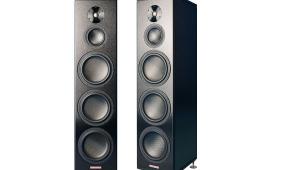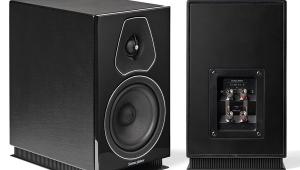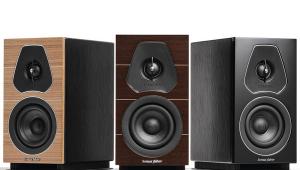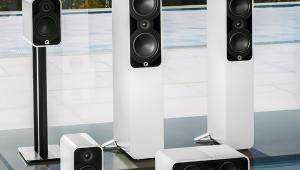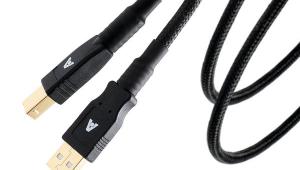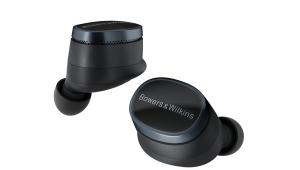Acoustic Energy AE309
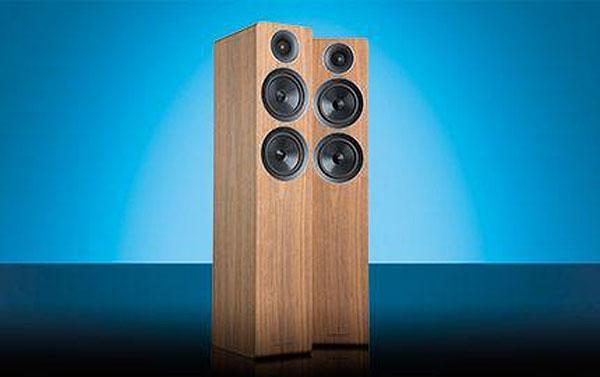
 Acoustic Energy made a great name for itself back in the late eighties and has gone from strength to strength ever since. Following a recent management buy out, the Gloustershire-based company has a renewed sense of momentum with various new speaker designs – several of which I have sampled – including the AE109 (HFC 425), a highly capable entry-level floorstander from its 100 Series. Now it’s the turn of its more sophisticated cousin the AE309, the 300 Series floorstander priced at £999. There’s a strong visual resemblance as this is the bigger brother of the equally suave AE300 standmount (HFC 434) priced at £599, and has the option of working with the AE307 centre speaker and AE308 subwoofer should you wish to make it a multi-channel family affair.
Acoustic Energy made a great name for itself back in the late eighties and has gone from strength to strength ever since. Following a recent management buy out, the Gloustershire-based company has a renewed sense of momentum with various new speaker designs – several of which I have sampled – including the AE109 (HFC 425), a highly capable entry-level floorstander from its 100 Series. Now it’s the turn of its more sophisticated cousin the AE309, the 300 Series floorstander priced at £999. There’s a strong visual resemblance as this is the bigger brother of the equally suave AE300 standmount (HFC 434) priced at £599, and has the option of working with the AE307 centre speaker and AE308 subwoofer should you wish to make it a multi-channel family affair.
Compared with the AE109, the extra budget gave designer James Luce a lot more flexibility – good as the 100 Series entry-level floorstander is, it is pared down to meet the price point and compromises were made. By spending approximately twice the cash, there’s far more scope to use good-quality materials more able to deliver a clear and pleasant sonic improvement. Although the AE309 is a thoroughly conventional box speaker, AE’s engineers have honed the design and introduced a myriad of improvements, including better drive units and cabinet construction.
A 2.5-way design, it gets the company’s 25mm aluminium dome tweeter that sports its so-called Wide Dispersion Technology. Aluminium is a light and stiff metal that when used correctly can be very effective as a drive unit. Indeed, it also surfaces in the 130mm mid/bass driver, this time sandwiched between two layers of ceramic. The AE309 gets two of these, working in parallel to give the effective air moving abilities of a much larger single cone, while being able to preserve the speaker’s neat, narrow tower proportions. The cone material is claimed to be very stiff but well damped, with an ultra-high force, long-throw motor system. Power handling and dispersion are also said to be improved over previous designs.
The company has specified what is said to be an inert 18mm high-density MDF, with extensive internal bracing. MDF is pretty standard stuff – and you won’t see that many high-end speakers using it. However, it can be made to sound good if the designer knows his craft, and the money saved can go to better drivers.
It’s good to see that Acoustic Energy gives the option of a real walnut wood veneer finish for just £100 on top of the standard piano-grade high gloss black or white lacquer versions.
There’s a slot-shaped bass reflex port on the rear baffle, which the company says has been tailored for the least possible air turbulence. An inert, massy damping material is fitted to the very bottom of the cabinet to further reduce coloration. Finally, 8mm floor spikes complete the picture.
Sound quality
If you spend your life listening to loudspeakers, you tend to notice patterns and floorstanding versions in a series can often introduce issues that aren’t found in a successful standmount – namely extra resonance and timing concerns. So, I am more than a little surprised to discover that the AE309 is more than just an AE300 standmount with an extra octave of bass added. This floorstander has been really well done – and the result is that it has far greater bass extension, but doesn’t lose anything in terms of the speed and attack that’s found on its baby brother.
Most of my listening is done with a Creek Destiny integrated amplifier (HFC 373) rated at 2x 120W into 8ohm. Acoustic Energy claims speaker sensitivity is rated at 89dB/1W/1m with a nominal impedance of 6ohm and a frequency response of 38Hz to 30kHz, which seems optimistic for a small floorstander, but having heard it, I don’t have cause to question it. Manix’s Hold Dis is a brand-new slice of classic nineties-style techno/drum and bass and has really powerful, grumbling sub-bass. Playing the AE309 at a highish volume in my listening room, I fully expect the speaker to groan under the strain – and maybe for the cones to hit their end stops. Yet it doesn’t happen and the clever thing is that the AE doesn’t slur the bass notes, nor does it deliver an extra bit of boom down South, in order to swell the sound to give the impression of greater size. Indeed, it does better in the bass than it should given its fairly diminutive dimensions, and it also times better than many reflex port speaker designs of its size that I’ve heard. The bass is deep yet even, taut and tight and remarkably devoid of lumpy colorations. That smooth, sophisticated bass extends up seamlessly to the midband, with little sense of crossing over to another driver. The midband is in turn open and detailed, giving a far wider and deeper sound than you would expect from a smallish speaker like this. Rush’s Tom Sawyer is a joy. This is high-energy progressive rock with the amazingly physical sound of Neil Peart’s drumming. The AE309 conveys the intensity and passion of his playing, yet neatly separates it out from all the other strands of the mix. Singer Geddy Lee’s high-pitched vocals are unexpectedly smooth, and hover in the centre of the mix with confidence. On top of this, the song’s multiple layers of guitars and synthesisers are all clear to hear. The best thing is how this speaker pieces everything together – as if it is effortlessly solving a jigsaw puzzle. The music sounds very coherent and structured, yet lyrical and lucid too.
Treble is also smooth. Whether it’s with Peart’s fierce, cascading cymbal work on the Rush track, or the lovely lilting accompaniment on Steely Dan’s Any Major Dude Will Tell You, that high-frequency unit sounds smoother than I remember from the AE300 – which itself was already quite a silky thing. There’s no sense of clanging metal dome tweeters here, yet the tweeter conveys the sound of drumsticks on metal cymbals very impressively at the price. It’s clean and yet has a realistic ‘ting’ to it that makes the music sparkle.
Wham’s Club Tropicana is a great quality eighties pop recording, and the AE309 sounds positively polished here and integrated from top to bottom, while further underlining that it really relishes rhythms as it ploughs along with great aplomb. In absolute terms, there’s a slight loss of fine detail towards the back of the soundstage. On Karajan’s reading of Beethoven’s Pastoral Symphony with the Berlin Philharmonic, for example, there is a slight opacity right towards the rear of the hall – plus a subtle loss of atmosphere. Yet still it locates images really convincingly and has a far wider soundstage than I expect given its cabinet size. Stage depth isn’t great, but the music ebbs and flows convincingly, the AE309 sounding fast and expressive, yet smooth and civilised.
Conclusion
Acoustic Energy’s AE309 may look a little meek and mild, but certainly doesn’t sound like it. Partnered with good-quality amplification, it delivers a very grown-up rendition of whatever type of music you choose to play. It’s pitched at an extremely competitive price point, but this floorstander will deliver your music with plenty of passion. DP
DETAILS
Product: Acoustic Energy AE309
Price: from £999
Origin: UK/China
Type: 2.5-way floorstanding loudspeaker
Weight: 2kg
Dimensions: (WxHxD) 175 x 900 x 280mm
FEATURES
● 1x 25mm aluminium dome tweeter
● 1x 130mm mid/bass driver
● 1x 130mm bass driver
● Quoted sensitivity: 89dB/1W/1m (6ohm)
Distributor: Acoustic Energy Loudspeakers Ltd.
Telephone: 01285 654432
Website: acoustic-energy.co.uk
Read the full review in November issue 442
 |
Inside this month's issue:
Ruark R610 music system and Sabre-R standmount speakers, PMC twenty.23i Active, floorstanders, English Acoustics Downton preamplifier, Bluesound NODE ICON preamp/streamer, Ortofon Concorde Music Blue MM cartridge and much, much more
|










